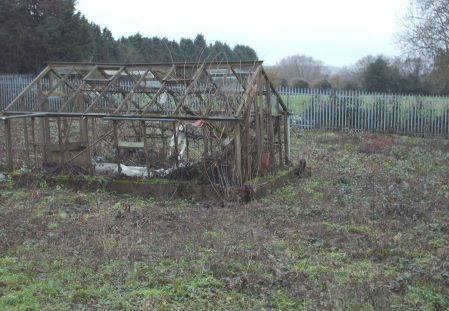Brownfield Land Development
Advantages and Disadvantages, with Comparison to Greenfield and Greyfield Development.
Brownfield land development has emerged as a pivotal aspect of sustainable urban planning, addressing the challenges of urban sprawl and environmental degradation. In this article, we will explore the intricacies of brownfield development, delving into its advantages and disadvantages, while drawing comparisons to the more conventional approach of greenfield and the recently coined greyfield development.
Understanding Brownfield Land
Brownfield land refers to previously developed sites that have become underutilised or abandoned, often due to changing industrial practice or contamination from former use. These sites pose unique challenges and opportunities for redevelopment, making them a focal point for urban planners and environmental specialists.
Advantages of Brownfield Development
1. Optimal Land Use: Brownfield development allows for the repurposing of existing infrastructure, making efficient use of land within urban areas. This reduces the pressure on green spaces and preserves natural habitats.
2. Infrastructure Accessibility: Brownfield sites are typically well-connected to existing infrastructure, such as roads, utilities, and public services. This accessibility facilitates cost-effective development and minimises the need for extensive new infrastructure.
3. Urban Revitalization: Transforming brownfield sites can breathe new life into urban areas, fostering community growth and economic revitalization. The redevelopment of these sites often leads to increased property values and attracts businesses, creating a positive impact on the local economy.
4. Environmental Remediation: Brownfield development presents an opportunity to remediate contaminated land, mitigating environmental hazards and restoring ecosystems. This not only benefits the immediate surroundings but can contribute to the overall improvement of environmental quality.
5. Regulatory Support: Companies acquiring contaminated or derelict land can claim an enhanced deduction of 50% or 150% against corporation tax for the remediation costs. This relief can also be claimed on past developments.
Disadvantages of Brownfield Development
1. Environmental Challenges: Brownfield sites are often contaminated with hazardous materials, posing significant environmental challenges. Cleanup efforts can be costly and time-consuming, requiring specialised knowledge and technology to ensure effective remediation.
2. Uncertain Costs: The extent of contamination and the complexity of cleanup processes can lead to unpredictable costs. Developers may face unexpected expenses, impacting the financial feasibility of brownfield projects.
3. Community Opposition: Some communities may resist brownfield redevelopment due to concerns about environmental risks or changes to the character of the neighbourhood. Community engagement and transparent communication are crucial to address these concerns.
4. Limited Space: Brownfield sites, while advantageous in reusing existing infrastructure, may have limited space compared to greenfield developments. This constraint can limit the scale and scope of projects.
Comparison with Greenfield and Greyfield Development
1. Greenfield Development:
Advantages: Greenfield development offers a clean slate, allowing for large-scale planning without the constraints of existing structures or contamination. It provides ample space for expansive projects and is often seen as a straightforward option with fewer unknowns.
Disadvantages: The environmental impact of converting undeveloped land into urban areas can be significant. Greenfield development may also require extensive new infrastructure, increasing costs and impacting natural habitats. There may be significant public objection to development on greenfield sites.
2. Greyfield Development:

Advantages: Greyfield is a newish term referring to sites which lie within the designated greenbelt but have history of commercial or industrial use and are now derelict or underused. Such development allows for the repurposing of and efficient use of land. It reduces the pressure on green spaces and preserves natural habitats. Greyfield development presents an opportunity to remediate contaminated land, mitigating environmental hazards and restoring ecosystems. Tax relief may be available.
Property Wire has reported on an investigation by Frank Knight which found:
"Knight Frank identified over 11,000 grey belt sites comprising less than 1% of the green belt, which do not include agricultural or residential uses.
Together these grey belt sites sit on land totalling 13,500 hectares ...
This land could be used for approximately 100,000 new family homes, potentially rising to over 200,000, ..."
Disadvantages: Similar to brownfield development, greyfield sites may require environmental remediation. Additionally, they might lack the connectivity and accessibility of brownfield sites in urban areas.
Conclusion
In the realm of sustainable urban development, brownfield land holds immense potential for addressing the challenges of growing populations and urbanisation. While brownfield development comes with its set of challenges, the benefits, including optimal land use, infrastructure accessibility, and environmental remediation, can make it a viable and attractive option. By comparing it with greenfield and greyfield development, we gain insights into the unique advantages and considerations associated with each approach. As we navigate the complexities of urban planning, brownfield development stands out as a key strategy for creating vibrant, resilient, and environmentally conscious communities.
In order to go forward any project has to be financially viable. The importance of having an experienced partner to assess the available information and advise on potential remediation cannot be overstated. For those willing to take the time to assess the risk there are opportunities to create successful developments. As they say in Yorkshire "Where there's muck there's brass".
